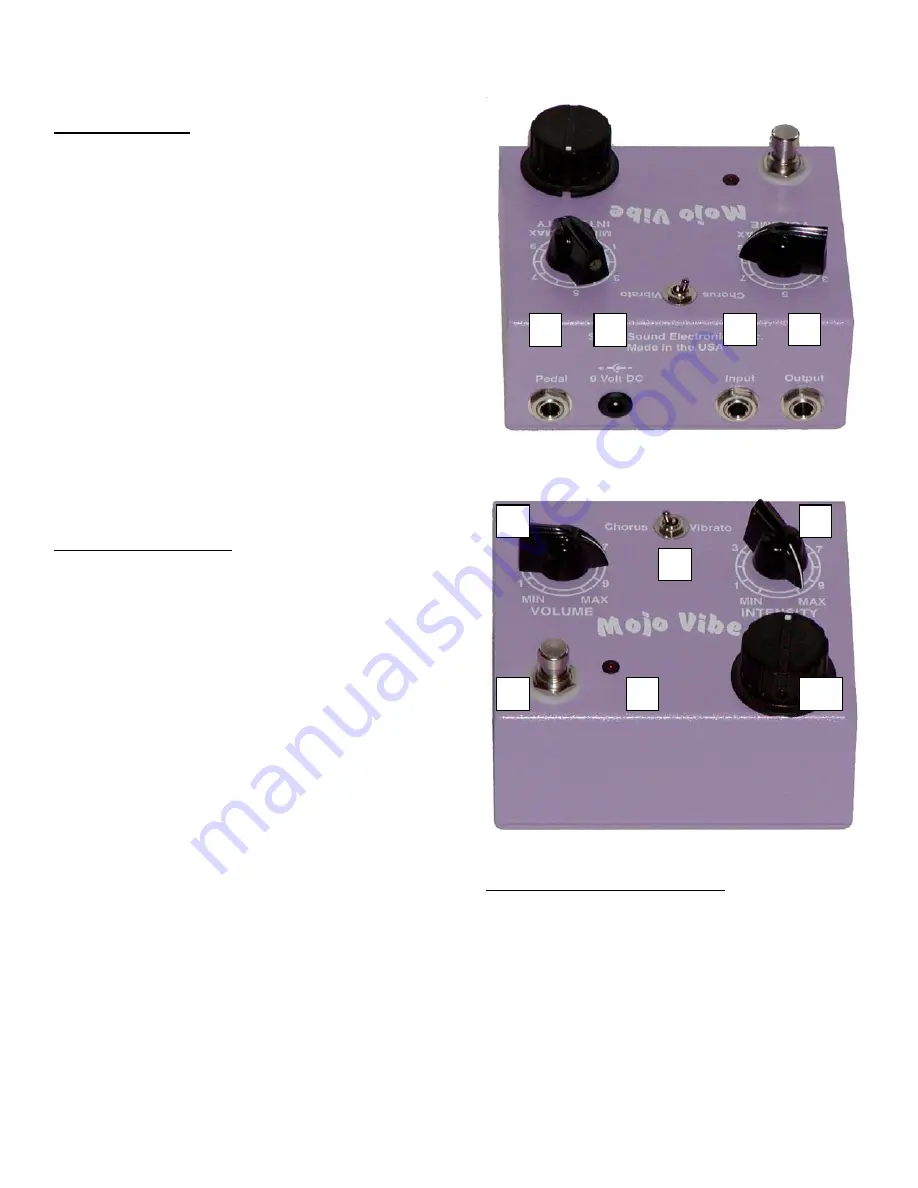
Rear Panel Jacks
1. Outpu
t – Output to amp or other effects in the
chain.
2. Input
– Input from instrument, or output from
previous effect.
3. Power input
– 2.1 mm barrel type connector
center negative polarity 9 volts DC.
Absolutely
do not use more than 9.6 volts DC.
There is
no advantage in trying to use a higher voltage
and it will damage the Mojo Vibe. The 9 volts
DC is converted to 18 volts internally and is
optimized for the high performance of the Mojo
Vibe.
4. Pedal input
– This used for an optional speed
pedal controller. Either one of the many
expression type pedals from Roland, Ensoniq,
MPM, Proel and others or with the use of a
channel insert cable (as used in mixing
consoles) you can use just about any passive
type volume pedal
…
Controls and Switches
5. Volume Control
– Used to either match the
effect output with the unaffected bypassed
signal. Or to ad a slight boost to the affected
signal.
6. Chorus/Vibrato Switch
– Selects between the
classic Uni-Vibe chorus sound or vibrato.
7. Intensity Control
– Controls the depth or the
amount of the chorus or vibrato effect.
8. Bypass Switch
– Switches the effect in and
out. The Mojo Vibe IS true bypass. Meaning
that when the effect is switched off it, the input
signal hardwired directly to the output jack. For
the most transparent bypass available.
9. LED Indicator
– When the effect is engaged
the Led will light and also pulse to the speed set
by the speed control (#10). When off the effect
is bypassed.
10. Speed Control
–
This controls the speed of the
sweep in the Mojo Vibe. From slow rolling
phase to watery bubbling “Leslie” type sound.
The large oversized knob is used in an attempt
to make it easier for those who do not wish to
use the option of a pedal controller, to adjust it
with their foot. This knob
when a control pedal
is used, so you have control over the total
speed range.is totally bypassed
Internal Switchable FET Buffer
The Mojo Vibe contains an active, internally
switchable Field Effect Transistor input buffer. Most
available “Vibes” that offer a “vintage” and “modern”
input switch use a input resistor switching circuit for
this purpose. The Mojo Vibe differs in that it uses
an active FET buffer to not only change the input
impedance but also buffers the input from the rest
of the circuitry for more clarity and high end
response. The reason the switch is internal as
1
2
3
4
5
6
7
8
9
10
























